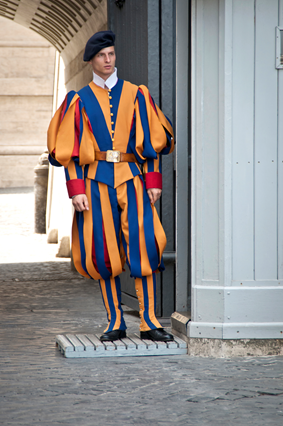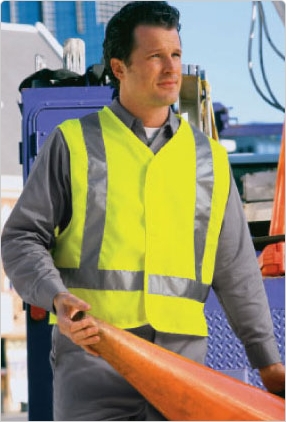Professional Identity: The Power of the Uniform
When we need help, whether we’re in a grocery store, an insurance office, or a movie theater—it’s instinctual to look for the person in uniform for assistance.
Uniforms are not only functional, but they also identify individuals as professionals in their fields or jobs. Business owners know that appearance matters. Whether you own a restaurant, an auto body shop, a construction company, or a medical practice, the uniforms or work attire your employees wear sends the message to your clients that you run a professional organization.
This article will explore the psychological significance of uniforms and highlight how well-designed uniforms help hard-working professionals meet the daily demands of their jobs.
The Significance of Uniforms
Uniforms create a sense of identity and cohesion among members of a group or team. They help distinguish members of different groups, from medical professionals to sports teams to church groups, and they are associated with many activities (e.g. plaid pants for golfers and leotards for gymnasts). In the retail and service industries, uniforms (often referred to as “trade dress”) help companies create salient brands, and they enable customers to identify employees who can help them.
Uniforms can help create a sense team spirit among employees and even boost employees’ self-esteem. One study found that well-designed uniforms can increase employees’ self-confidence and enhance their credibility.
Uniforms in the Military
People in the armed forces have been wearing uniforms for millennia. Military uniforms identify and distinguish a group while they are participating in military and military-related activities, and they symbolize honor and loyalty.
Uniforms often evolve over time. Military uniforms, once colorful, have become much more utilitarian in recent times. Similarly, doctor’s coats have evolved in response to changes in understanding about sanitation. While the cause of infection was once unknown, today we understand the microscopic causes of infection. White coats not only convey a sense of hope and purity, but they can also be washed in hot water and bleached to kill germs, which is partly why white has become the standard color of doctor’s coats in modern times.
Swiss Guards: Keeping it Colorful for 500 Years
Among the most distinctive and colorful uniforms still in existence today are those worn by the Papal Swiss Guards who watch over The Vatican. The Swiss Guards have defended the Vatican and other European courts since the 16th century, and to this day wear a distinctly Renaissance uniform, making the guards themselves a tourist attraction.

Swiss Guard at his post
In the workplace, uniforms can be both functional and often representative of a person’s profession. Construction workers wear tool belts and hard hats, nurses wear scrubs, doctors wear white lab coats, and corporate businesspeople wear pantsuits and button-down shirts.
Medical Uniforms
“The physician heals, nature makes well.” –Aristotle
The white lab coat is universally recognized as a symbol for doctors. In fact, the white lab coat is synonymous with carefulness and tenacity, according to a study led by a professor at the Kellogg School of Management at Northwestern University and published on the website of The Journal of Experimental Social Psychology. The study found that participants who wore a white coat that they believed belonged to a doctor paid more attention than participants who wore the same coat, but believed that it belonged to a painter.
People in the medical profession are undoubtedly some of the busiest and most hard-working in society. Whether it’s an ER nurse pulling a 16-hour shift, a doctor making rounds at the hospital, or a caregiver in a nursing home, medical professionals typically wear durable, comfortable clothing that allows them to move about freely.
Automotive Work Uniforms
“The expectations of life depend upon diligence; the mechanic that would perfect his work must first sharpen his tools.” –Confucius
A sturdy uniform is indeed a “tool” of sorts in any good mechanic’s toolbox. Sturdily designed uniforms—including the quintessential mechanic’s jumpsuit—protect mechanics from oil and other chemicals they encounter on the job. A classic mechanic’s shirt is unmistakable to customers and sends the message that the mechanic takes his or her job seriously.
Industrial Workwear
in·dus·tri·ous (in-duhs-tree-uh s)
adjective
definition: diligent and hard-working.
Industrial workers, from construction foremen to waste management technicians to manufacturing assembly workers, are indeed some of the hardest working people in our communities.
These individuals keep our towns and cities running, our roads clear, and they help supply the products we use every day. They typically wear uniforms that offer protection, durability, and comfort. Traditional workwear for industrial workers includes button down short- and long-sleeved shirts and protective gear such as hard hats and high visibility clothing with built-in reflective tape that can easily be seen both day and night.

Corporate Work Apparel
“You cannot climb the ladder of success dressed in the costume of failure.” –Zig Ziglar
While the expression “You can’t judge a book by its cover” holds true, it’s also true that “you never get a second chance to make a first impression.” The way we present ourselves outwardly sends a message about our character. A sleek suit suit says confidence, competence, and professionalism. A sleek suit with a hot pink tie adds playfulness to that list of character traits. Conversely, jeans and a t-shirt in a business environment often speak to a laid-back corporate culture that emphasizes comfort and creativity.
Being sharply dressed in a corporate environment conveys not only a sense of confidence and professionalism, but also sends a message that the person respects those around him or her, from employees to shareholders to customers and prospective clients.
Uniforms Are Here To Stay
Uniforms help promote a sense of community and common identity. They help us identify professionals in different fields, and they help businesses create salient brands. Well-designed uniforms are not only functional, but encourage people to feel like part of a group with a common purpose.
Sources:
http://www.nytimes.com/2012/04/03/science/clothes-and-self-perception.html?_r=0